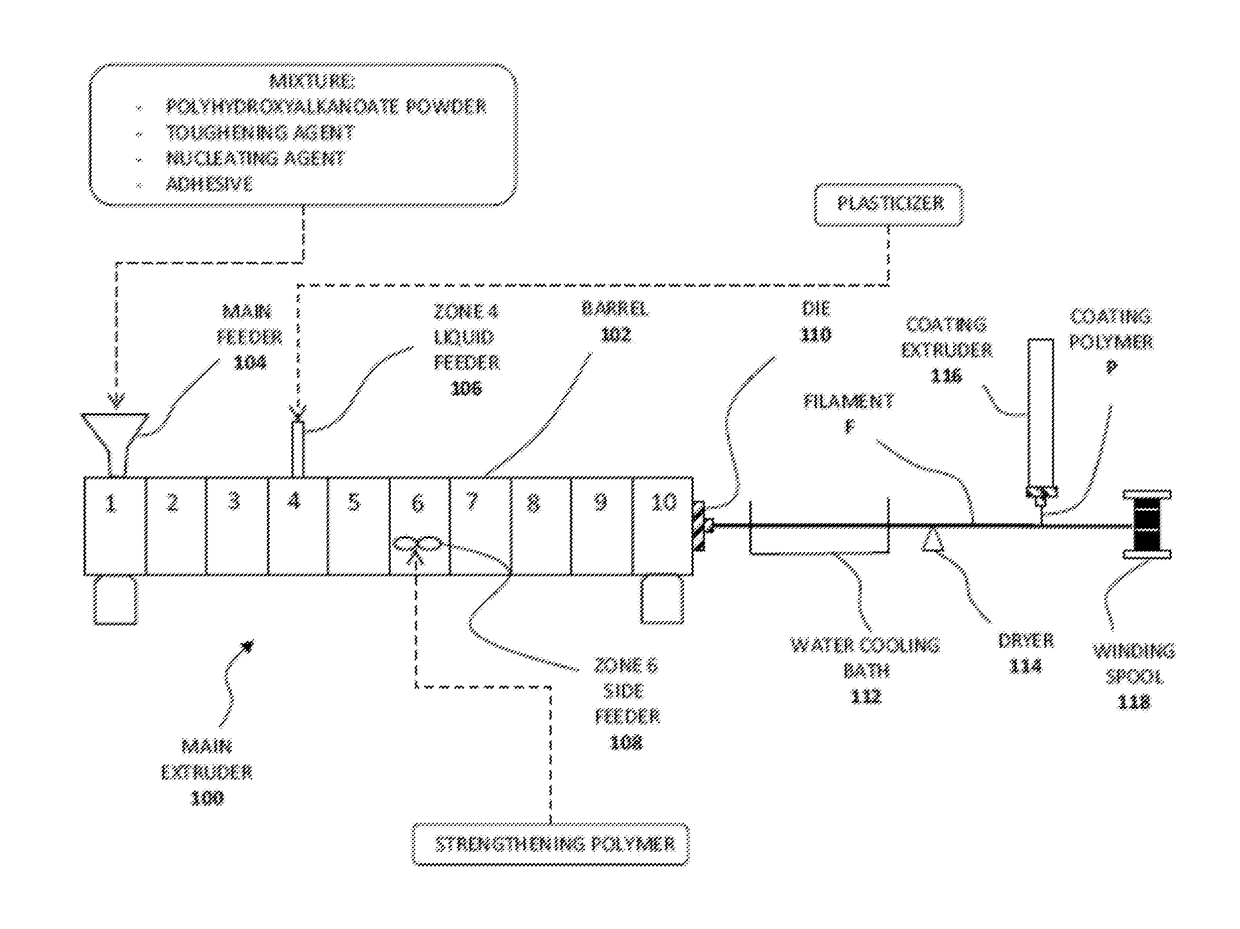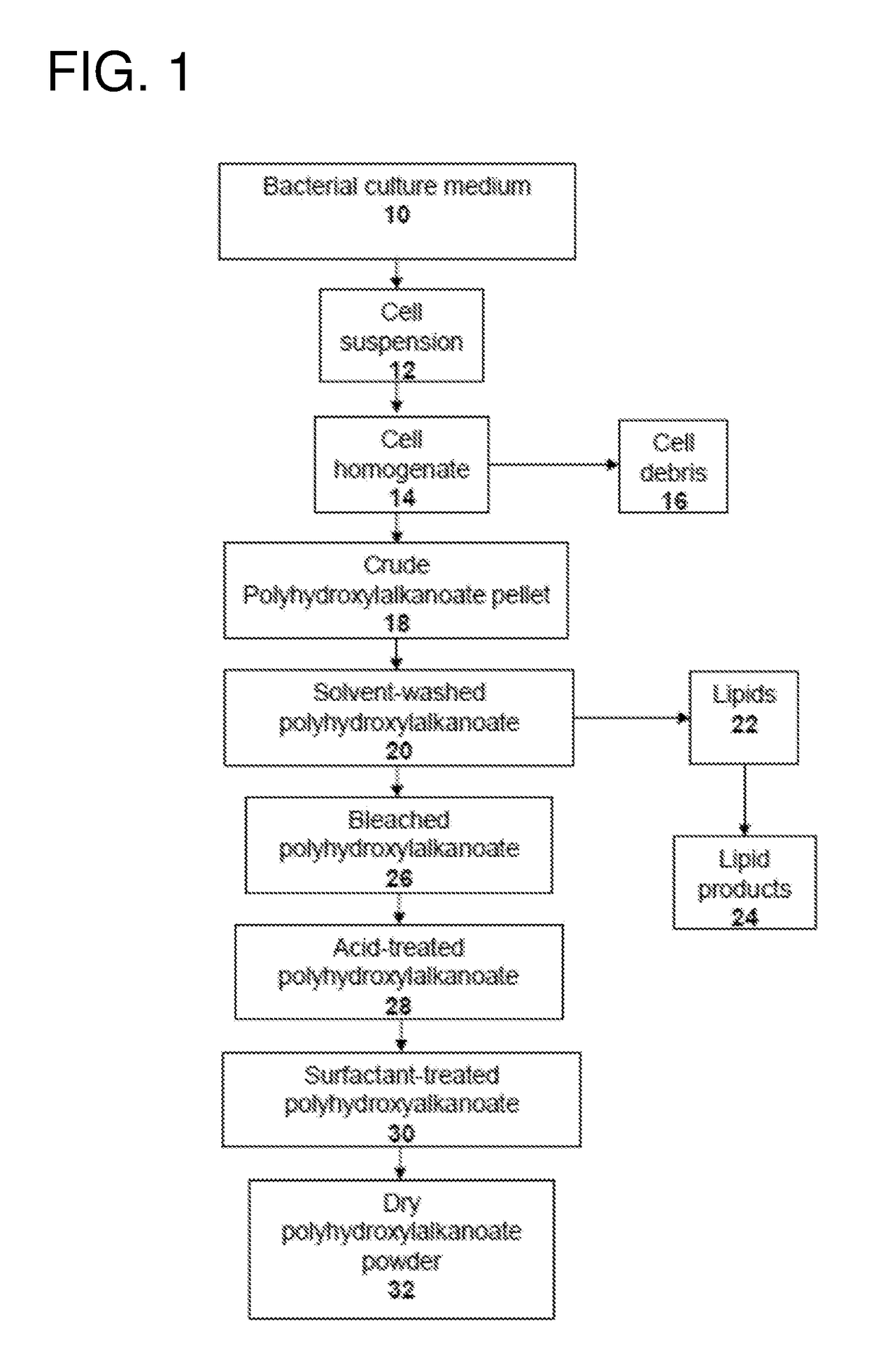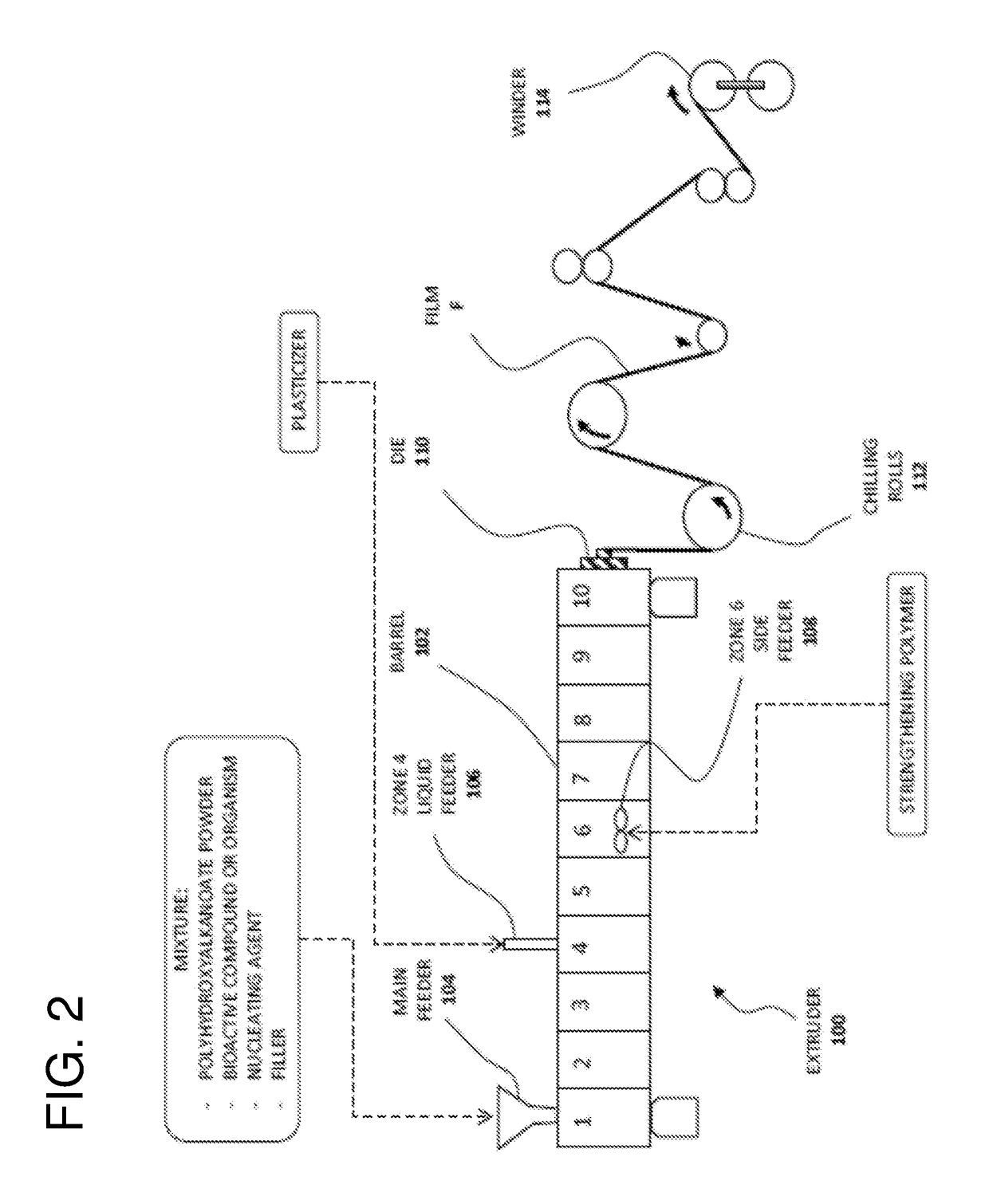Bioactive biopolymer films and coatings
- Summary
- Abstract
- Description
- Claims
- Application Information
AI Technical Summary
Benefits of technology
Problems solved by technology
Method used
Image
Examples
example 1
f Extraction of Polyhydroxyalkanoate from Microbial Cell Culture
[0190]Methylotrophic bacteria are capable of utilizing simple one carbon substrates, such as methanol, methane, or other single carbon compound as their sole carbon and energy source. Methanol is a relatively inexpensive substrate, and has the added advantages of high solubility in water and low toxicity. Therefore, bacteria that can utilize methanol are of interest for a variety of applications involving methanol as a biofeedstock, including the biological production of fine chemicals and industrially important proteins. In certain embodiments of the present invention, the polyhydroxyalkanoates used for production of biofunctionalized films and coatings are produced by methylotrophic bacteria, such as bacteria from the genus Methylobacterium. Methylobacterium extorquens strain AM1 is a non-engineered representative strain capable of overproduction of polyhydroxyalkanoates in its native form. Other strains, genetically ...
example 2
on of Polymer Blends for Bioactive Films
[0196]This example describes the polymer blends and components thereof used in the manufacture of the bioactive films of the present invention. The classes of components of the polymer blends described hereinbelow provide the bioactive films with characteristics that support various embodiments of the bioactive film which may be used in various applications. The skilled person will understand that certain components may fulfill more than one of the functions described hereinbelow. The skilled person has the knowledge to identify certain components that have properties of more than one of the general categories outlined hereinbelow. For example, the skilled person will recognize that nanocrystalline cellulose may function both as a natural strengthening fiber and a nucleating agent.
[0197]Polyhydroxyalkanoates—
[0198]The main component of the bioactive film compositions of the present invention is provided by one or more polyhydroxyalkanoates. In...
example 3
on of Polymer Blends for Biodegradable Filaments
[0218]This example describes the polymer blends and components thereof used in the manufacture of the biodegradable filaments of the present invention. The classes of components of the polymer blends described hereinbelow provide the biodegradable filaments with characteristics that support various embodiments for use in various applications. The skilled person will understand that certain components of the polymer blends may fulfill more than one of the functions described hereinbelow. The skilled person has the knowledge to identify certain components that have properties of more than one of the general categories outlined hereinbelow. For example, the skilled person will recognize that, in certain embodiments, nanocrystalline cellulose may function both as a natural strengthening fiber and a nucleating agent. Certain embodiments include bio-based components to enhance the biodegradability of the polymer blend.
[0219]Advantageously, v...
PUM
| Property | Measurement | Unit |
|---|---|---|
| Fraction | aaaaa | aaaaa |
| Fraction | aaaaa | aaaaa |
| Fraction | aaaaa | aaaaa |
Abstract
Description
Claims
Application Information
 Login to View More
Login to View More - R&D
- Intellectual Property
- Life Sciences
- Materials
- Tech Scout
- Unparalleled Data Quality
- Higher Quality Content
- 60% Fewer Hallucinations
Browse by: Latest US Patents, China's latest patents, Technical Efficacy Thesaurus, Application Domain, Technology Topic, Popular Technical Reports.
© 2025 PatSnap. All rights reserved.Legal|Privacy policy|Modern Slavery Act Transparency Statement|Sitemap|About US| Contact US: help@patsnap.com



